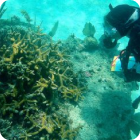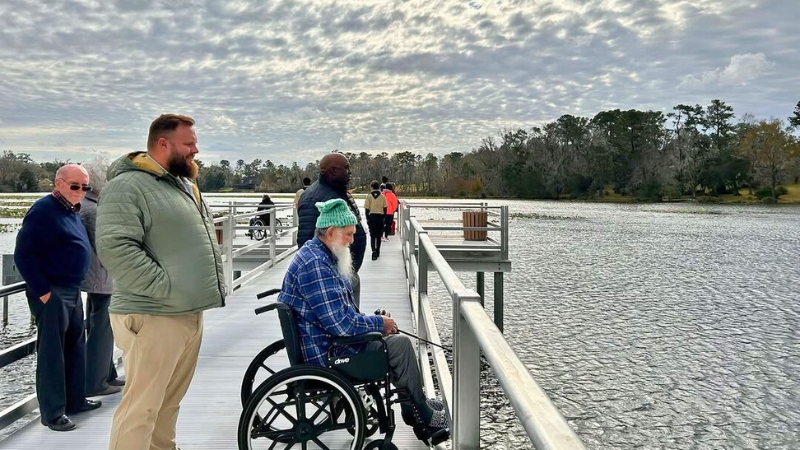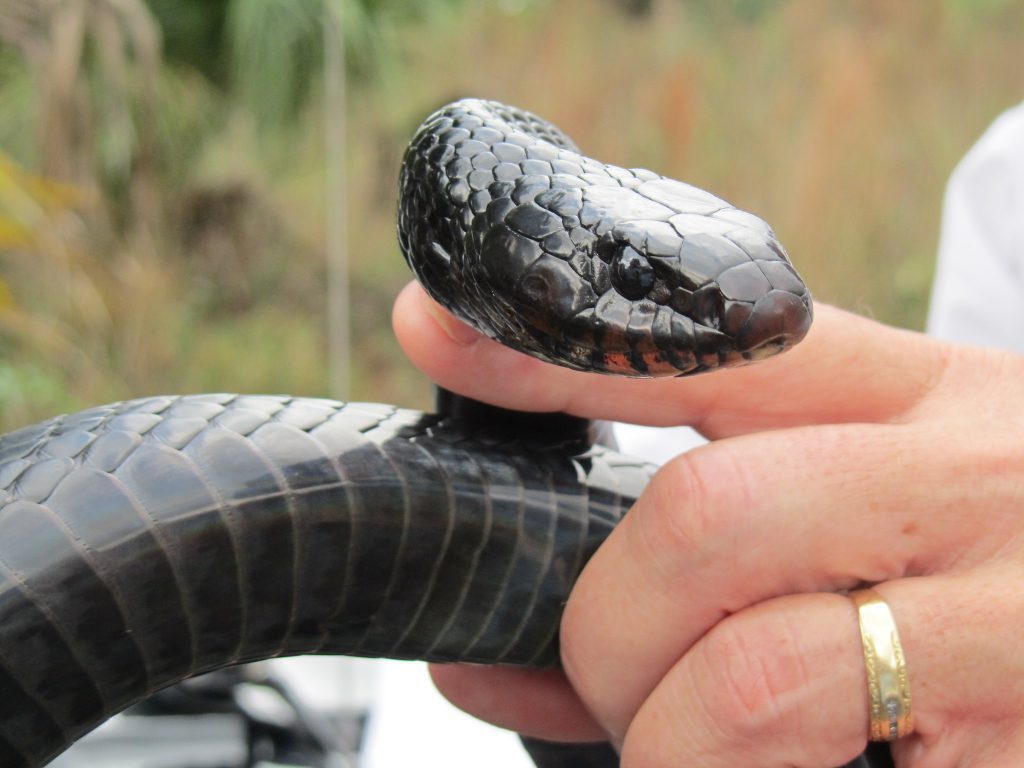
Beneath the shimmering waters of Florida’s Loxahatchee River, something incredible is happening—the restoration of one of our state’s most vital ecosystems. Thanks to the dedication of researchers, conservationists, and the support of donors, eelgrass meadows planted in the river are flourishing, marking an exciting milestone in our ongoing mission to replant the Indian River Lagoon.
Recently, researchers captured drone footage of the careful removal of the protective metal cages that shield young eelgrass plants from hungry herbivores like turtles and manatees. Afterall, “Loxahatchee” is the Seminole word meaning “turtle river!” These cages have served as temporary guardians, giving the plants the chance to take root and grow strong in their new environment. Seeing these young meadows thrive without protection will mark the next milestone in the success of this restoration effort.
Seagrass meadows like those in the Loxahatchee River are critical to the health of Florida’s coastal ecosystems. These underwater meadows:
- Support marine life: They provide food and shelter for manatees, fish, crustaceans, and countless other species.
- Improve water quality: Acting like nature’s filter, seagrass traps sediment, reduces erosion, and absorbs pollutants.
- Combat climate change: Seagrass sequesters more carbon per acre than many forests, playing a vital role in reducing greenhouse gases.
The urgency of this work became clear in 2021 when manatee deaths skyrocketed along Florida’s east coast due to starvation. With eelgrass nearly wiped out in some areas, these iconic marine mammals lost their primary food source. Projects like the one in the Loxahatchee River are vital to restoring the habitats that sustain not only manatees but entire ecosystems.
This ambitious project to replant the Indian River Lagoon began by identifying the right conditions: good water quality, nutrient-rich soil, and protective measures to give the plants a fighting chance. Over the past year, 30,000 eelgrass plants have been rooted across 15 fenced sites in the river. Despite challenges, including hurricanes, these aquatic meadows are thriving, proving the power of persistence and collaboration.
The success of the Loxahatchee River planting site is inspiring future efforts, including a project planned for Key Biscayne. Support the work we’re doing to save Florida’s marine ecosystems by donating to our Marine Mammal Fund. Together, we can continue to bring life back to the water and restore the Florida we love.













